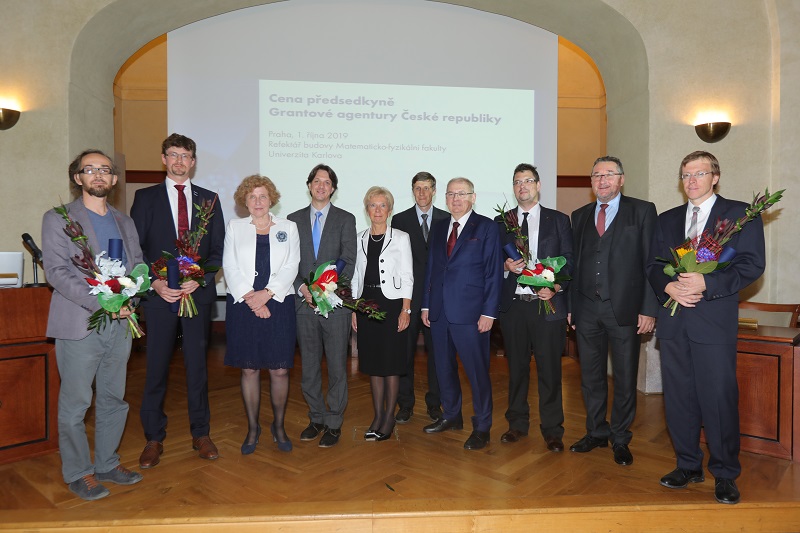Five Principal Investigators of the top basic research projects received the GACR President’s Award 2019. In contrast to last year, when one female investigator was awarded, male investigators dominated this year’s award.
Zdeněk Sofer succeeded with a project investigating the application of ion beams for modifications of graphene-based structures. Jiří Bruthans examined the effect of gravity-induced stress on sandstone erosion. Marek Mráz’s project focused on studying the regulation of B cell receptor (BCR) signalling pathway by microRNAs. Laureate Václav Štětka analysed the role of social media in transformation of political communication and citizen participation in the Czech Republic. Another laureate, Robert Černý, focused on oro-pharyngeal interface during vertebrate primary mouth formation. The GACR presidium decided on the winners among dozens of different projects.
“Yet again, choosing the best projects has been extremely difficult this year. We face the challenge of selecting the best projects among dozens of projects every year. On the other hand, it is a good message on how brilliant scientists in our country are. Congratulations to award winners, their projects were indeed excellent,” Alice Valkárová, the GACR president, stated.
The GACR President’s Award was established in 2003. Since then, 69 awards have been given in response to the excellent results in carrying out basic research projects supported by GACR. This year’s five awarded projects were selected out of 448 projects that ended last year, based on proposals of the respective discipline committees. The GACR presidium decided on the final selection of projects for the GACR President’s Award this April.
The prize is awarded for excellent results in basic research projects that had been supported by GACR. The Principal Investigators of the chosen projects and their co-workers receive a financial reward. Every year, the award goes to four to five Principal Investigators, whose projects were completed in the previous year, received a nomination for the award and acquired excellent evaluation by expert advisory bodies.
